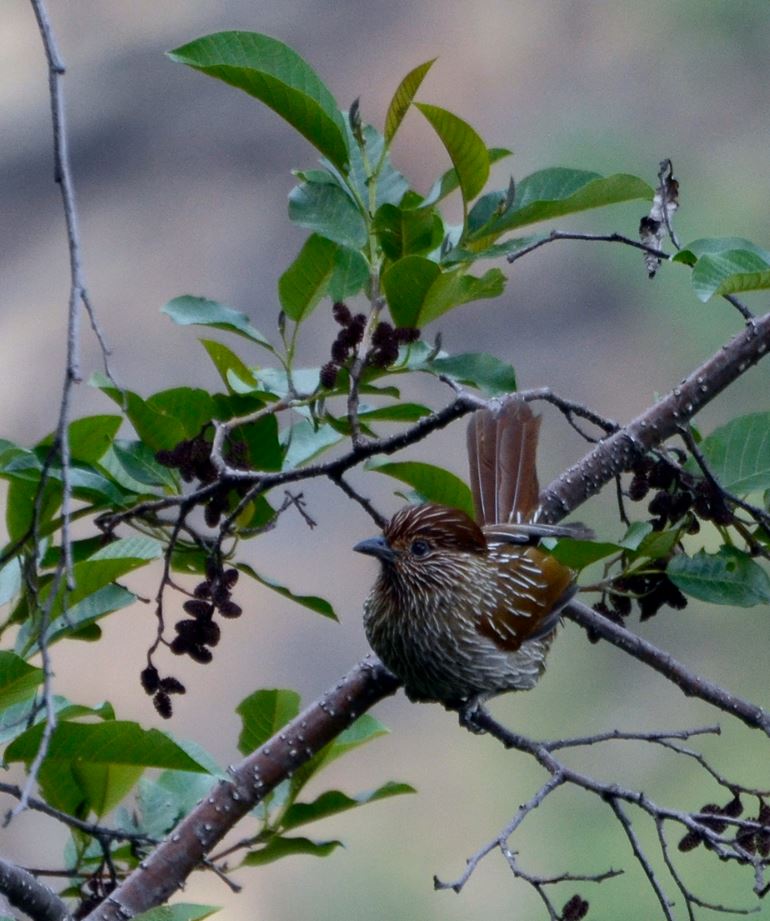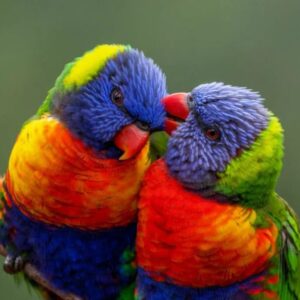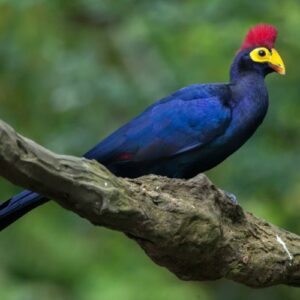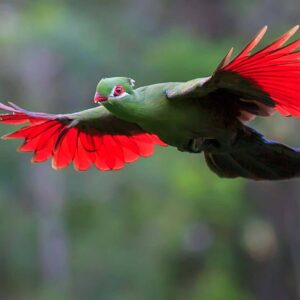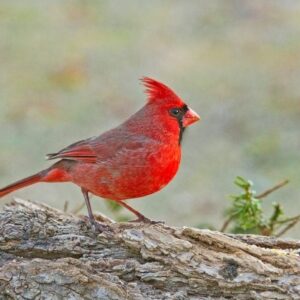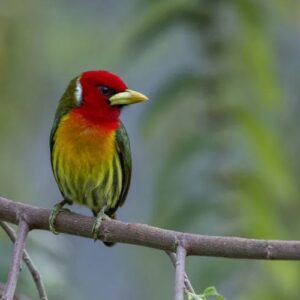Its plumage is predominantly brown and lacks prominent markings, but it is adorned with delicate, pencil-thin white lines that gracefully trace across its entire body, adding to its distinctive and captivating appearance.
Meet the Striated-laughingthrush:
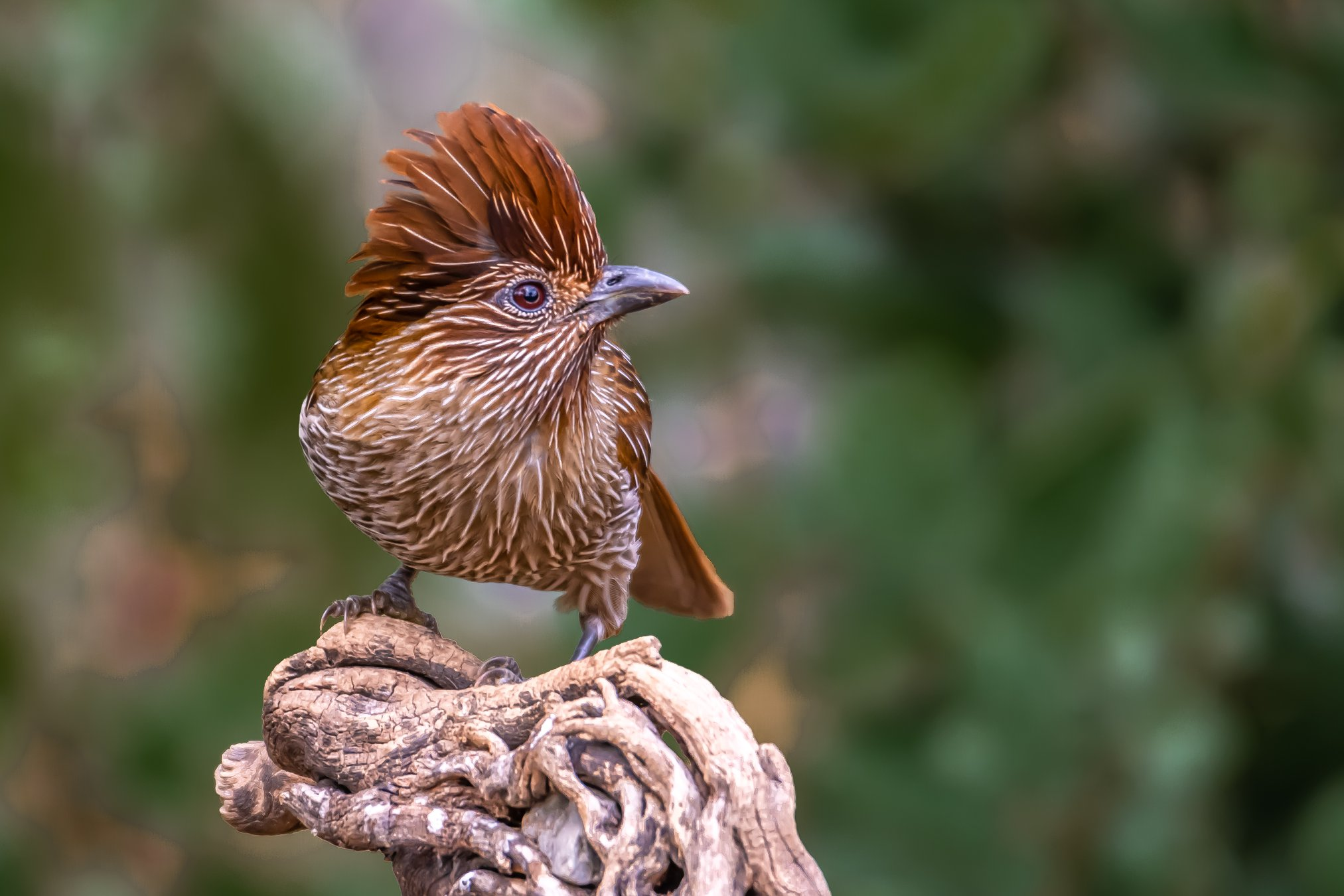
The striated laughingthrush (Grammatoptila striata) is a passerine bird in the family Leiothrichidae. The upper plumage, sides of the head and neck, chin, and throat of this bird are a rich umber-brown, deepest on the crest and gradually fading into a pale brown on the lower plumage.
Each feather on both the upper and lower parts, as well as on the wing coverts and tertiaries, features a long median white streak. These streaks are more prominent but less distinct on the abdomen and under tail-coverts. The quills are dark brown, with the outer webs of the first few primaries appearing hoary, and those of the others displaying a pale chestnut hue.
The tail is chestnut, with the outer feathers tipped with a tiny white mark. The bill is black, the legs are dusky plumbeous, and the iris is a reddish-brown, as noted by Jerdon.
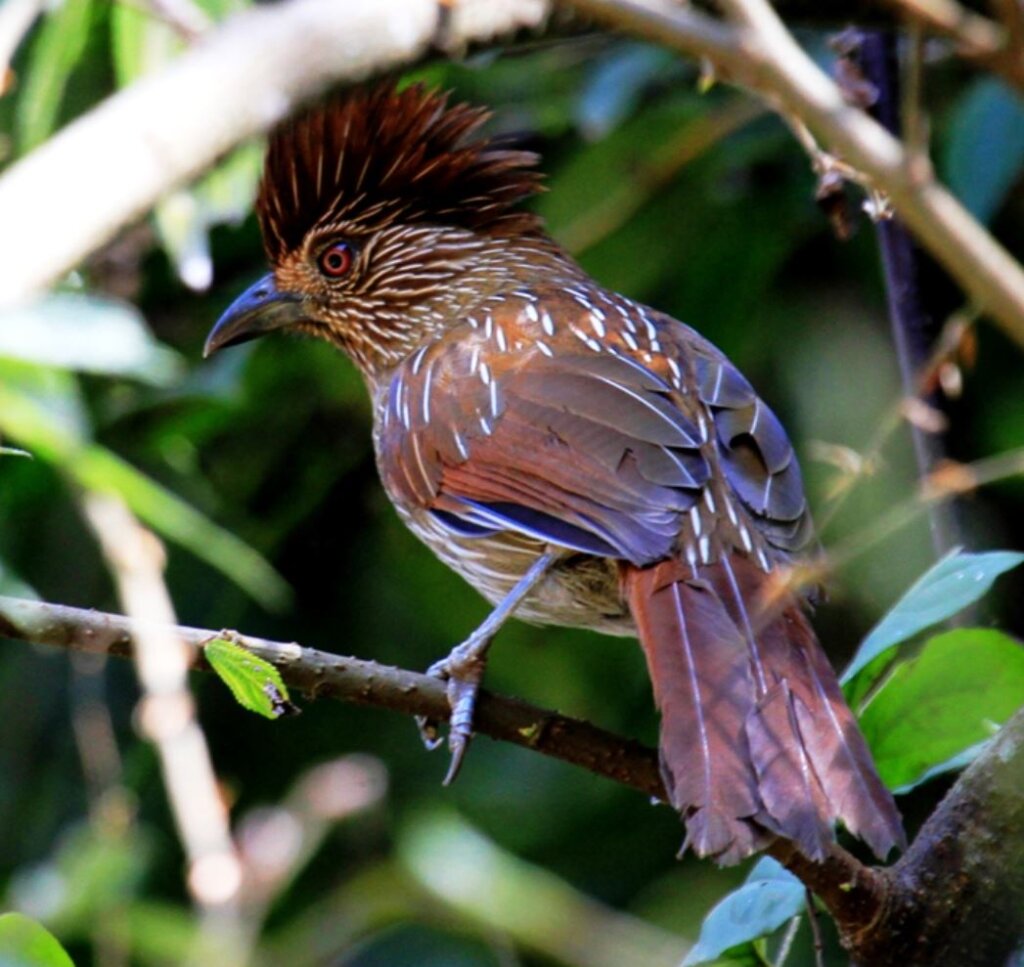
“File:Striated laughingthrush (Grammatoptila striatus).jpg” by Wikian01 is licensed under CC BY-SA 4.0. (cropped)
With its short bill and loose, bushy crest, this laughingthrush resembles a dark, rather unmarked barwing.
Brown overall with pencil-thin white lines all over the body.
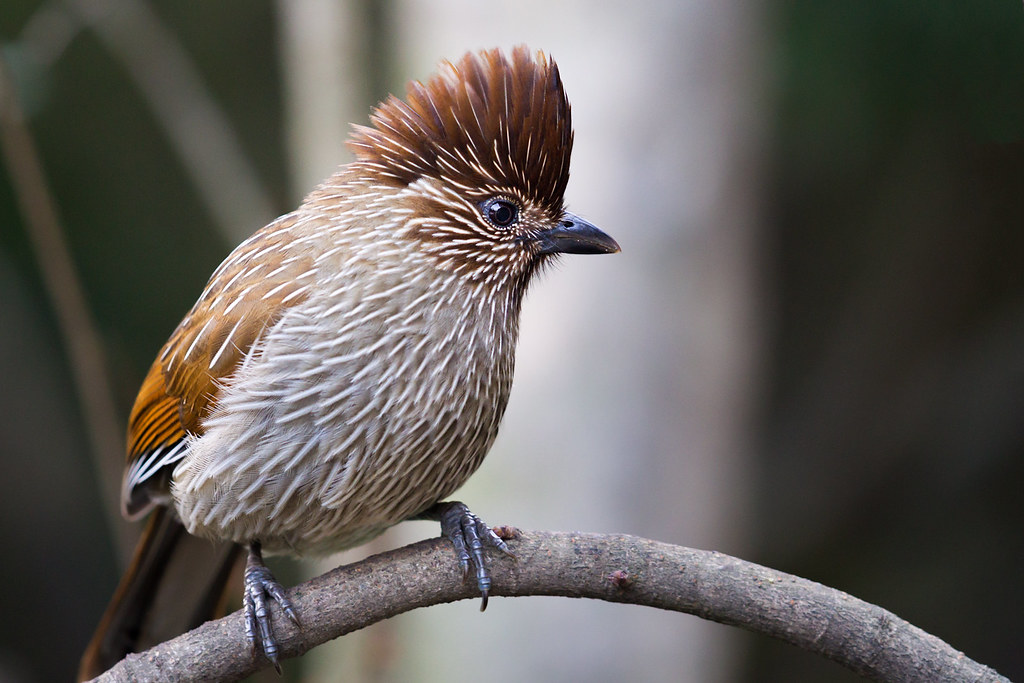
This species is found in the Himalayas, ranging from the Sutlej valley to Bhutan, at elevations between 6000 to 9000 feet. There have been some records suggesting its presence in Birbhum, Bengal, although this is likely erroneous.
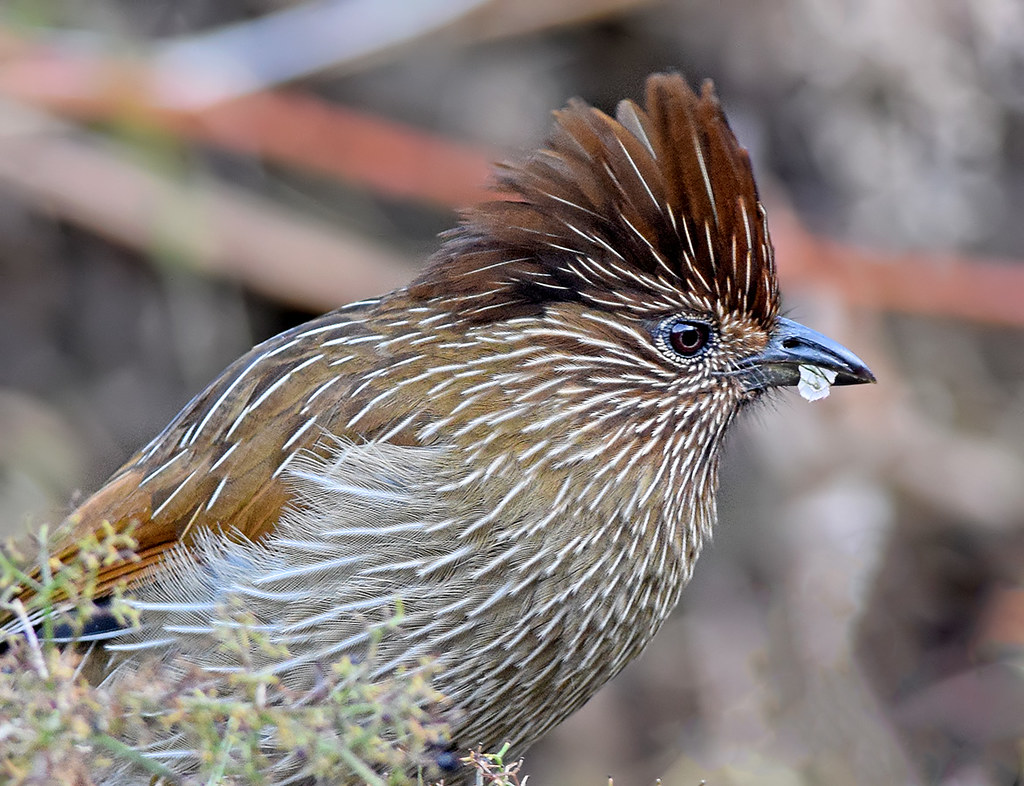
“striated laughingthrush” by T_Monk is licensed under CC BY 2.0.
Its natural habitats are subtropical or tropical moist lowland forests and subtropical or tropical moist montane forests.
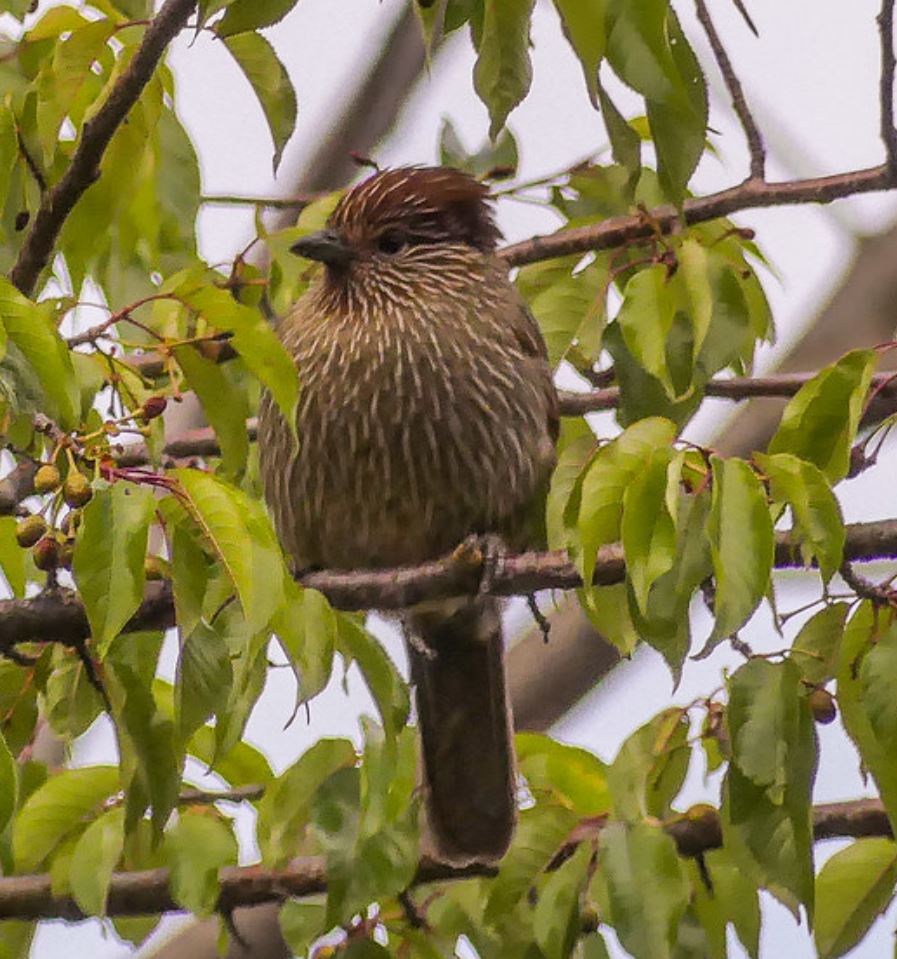
“Striated Laughingthrush” by Mike Prince is licensed under CC BY 2.0. (cropped)
It primarily forages within the middle storey to the lower canopy of its habitat, often searching for sustenance in the canopy of tall trees, as well as on lower branches and in the undergrowth. This bird’s diet encompasses a variety of foods, including insects like beetles, along with berries and seeds. It displays a penchant for aromatic wintergreen, flowers, and rhododendron, and also indulges in gelatinous lichen.
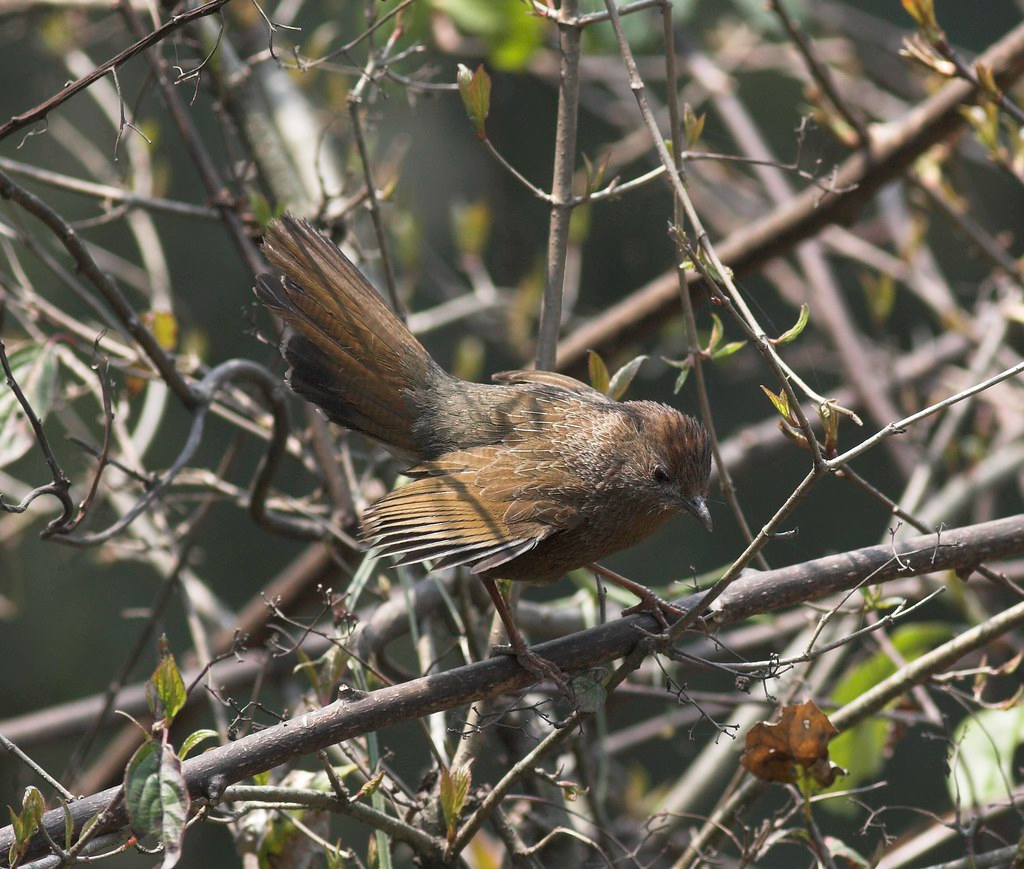
“Striated Laughingthrush Garrulax striatus” by Allan Drewitt is licensed under CC BY 2.0.
According to Jerdon, this bird is known for its distinctive calls, with one resembling the clucking of a hen after laying an egg. Breeding typically occurs from May to July, during which the bird constructs a cup-shaped nest made of grass and other materials in a low tree. They appear to lay only two eggs during this period. These eggs are blue, with some being entirely spotless while others have a few brownish-red specks. They measure 1.3 by 0.9 inches.
